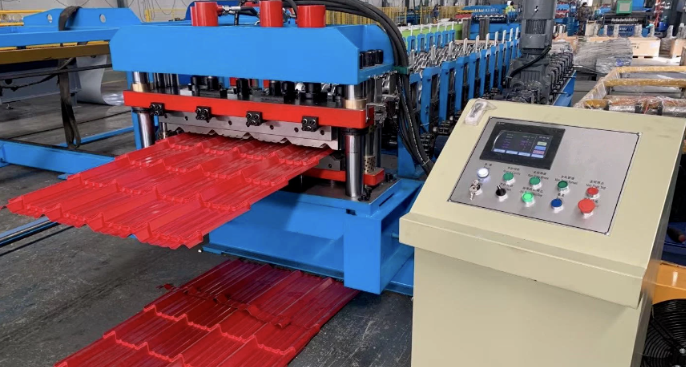
Posted on Thursday, September 19, 2024
A Step Tile Roll Forming Machine is designed to produce metal roofing tiles with a stepped or ribbed profile, which is widely used in roofing systems for both residential and commercial buildings. These machines can shape metal sheets into a stepped tile appearance, which mimics traditional clay tiles but with the durability and lightweight nature of metal.
Step tile roofing profile
A Step Tile Roofing Profile mimics the appearance of traditional clay or concrete tiles but is made from metal sheets, providing a lightweight, durable, and aesthetically pleasing roofing solution. These metal tiles are commonly used in both residential and commercial buildings due to their durability, weather resistance, and modern look.
Machine matcher specialise in matching your roll forming machine requirements with the perfect new or pre owned machine.
We partner with, and represent some of the finest roll forming manufacturers in the market. For more information and a free machine quote please contact us today or view all machines.

Understanding Coil IDs, Mandrel Sizing, and Shear Pin Safety in Uncoilers
Posted on Wednesday, October 1, 2025
Mismatched sizes can lead to machine damage, downtime, and safety hazards — often evidenced by a shear pin failure.

How Coil Tensile Strength Affects Roll Forming and How to Adjust Your Machine
Posted on Wednesday, October 1, 2025
Changes in tensile strength can significantly affect the finished profile, causing misaligned bends, uneven edges, and out-of-spec parts.

Why Paint Cracks on an Embossing Line Running Pre-Painted Coil and How to Prevent It
Posted on Wednesday, October 1, 2025
This issue not only affects the visual quality of the product but can also lead to increased scrap rates and customer complaints.

The Most Popular Standing Seam Metal Roof Panels in the U.S. — A Comprehensive Guide
Posted on Monday, September 29, 2025
In this post, we’ll explore what panel styles and sizes are most popular in the U.S